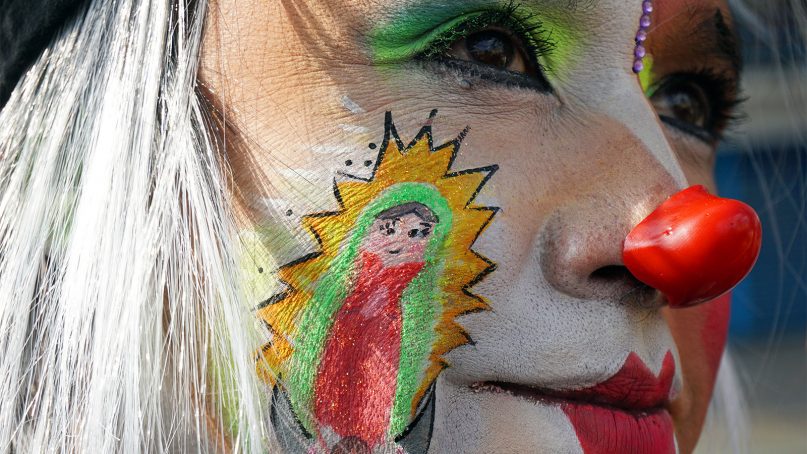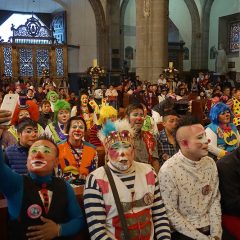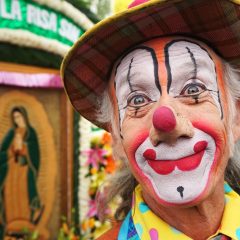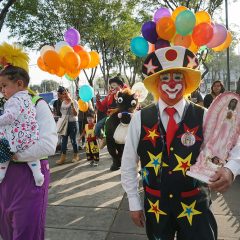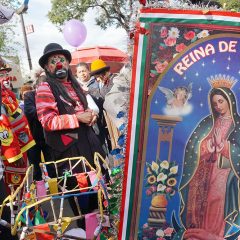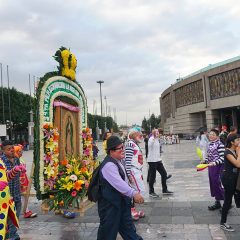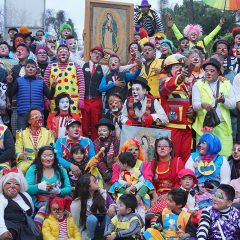(RNS) — For nearly 500 years, since the Virgin of Guadalupe reportedly appeared to the indigenous convert Juan Diego, Mexicans have adopted her as “the mother of all Mexicans.” Roughly 7 million pilgrims visit the Basilica of Our Lady of Guadalupe in northern Mexico City, located close to the hill of Tepeyac, where she is said to have appeared in 1531.
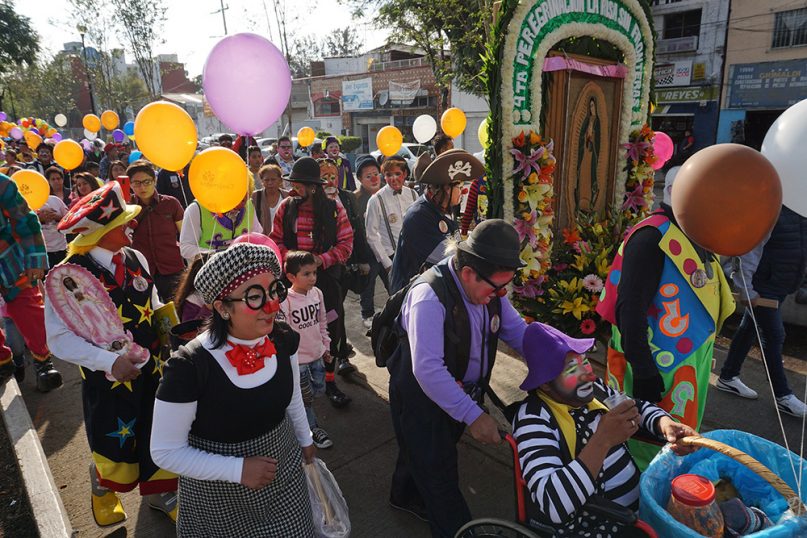
Pilgrim clowns walk several kilometers during their annual journey to La Villa de Guadalupe, near where Our Lady of Guadalupe is believed to have originally appeared to Juan Diego in 1531. RNS photo by Irving Cabrera Torres
Millions of devotees from all parts of Mexico and around the world pour into the Villa de Guadalupe, as the area around the basilica is called, in the week before the Guadalupana Virgin’s feast day on Dec. 12.
- Many clowns attend a Mass at the end of the payaso pilgrimage to honor the Virgin of Guadalupe in the old basilica. RNS photo by Irving Cabrera Torres
- “I am participating in the procession to thank the Virgin for so many years of such beautiful work,” said Tamborin, a clown with more than 50 years of experience. Three generations of Tamborin’s family have worked as payasos in Mexico. RNS photo by Irving Cabrera Torres
- One clown carries his baby, another a statue of Our Lady of Guadalupe, during the procession toward La Villa de Guadalupe in northern Mexico City. RNS photo by Irving Cabrera Torres
The day is marked with processions, rituals, dances and prayers in honor of the Guadalupana, including a pilgrimage of hundreds of clowns who parade to the basilica, many with their families in tow, to thank the Virgin for work and pray for good fortune in the year ahead. The event draws clowns — los payasos in Spanish — with decades of experience as well as fresh-faced beginners.
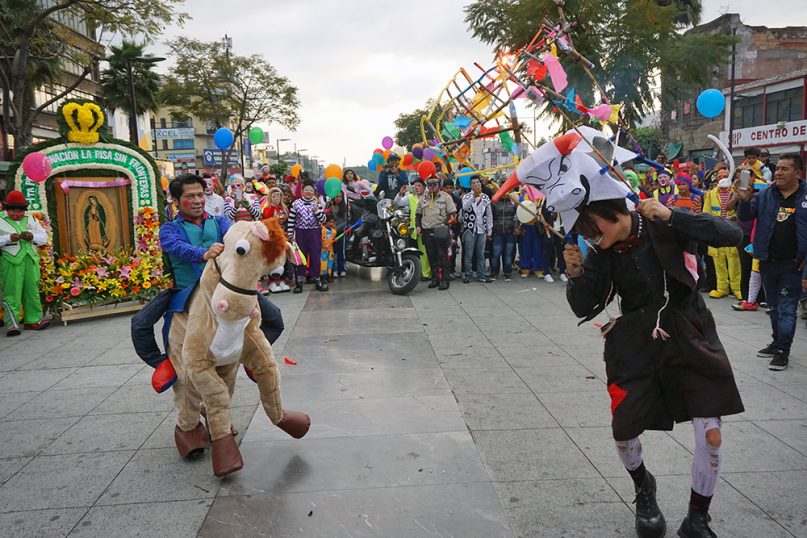
During the pilgrimage, the clowns play games and have fun with the bystanders. Here, a traditional ritual at Mexican religious festivals is observed: the burning of the bull. It consists of dancing with the image of a bull that is lit with fireworks, which carries a variety of meanings, including burning of sins and sorrows. RNS photo by Irving Cabrera Torres
- The clown Chispín, center, has been making people laugh for more than 20 years. Chispín’s organization, La Risa Sin Fronteras, or Laughter Without Borders, participates in the annual payaso pilgrimage to venerate the Virgin of Guadalupe in Mexico City. RNS photo by Irving Cabrera Torres
- The payaso pilgrimage arrives at the Basilica of Our Lady of Guadalupe, rear, in northern Mexico City. RNS photo by Irving Cabrera Torres
- Participants in the clown pilgrimage, including many child clowns, pose for a family photo. Parents then took children to the basilica for blessings. RNS photo by Irving Cabrera Torres
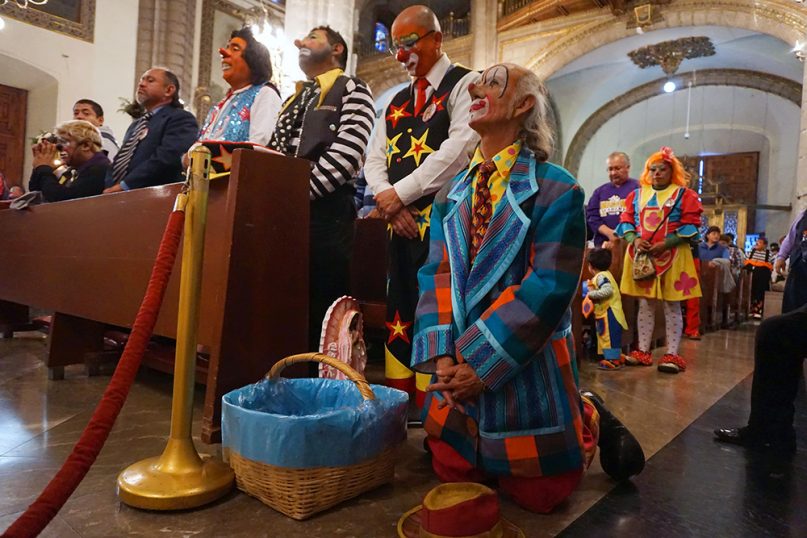
Tamborin, a clown with more than 50 years of experience, kneels during a Mass at the end of the payaso pilgrimage to honor the Virgin of Guadalupe in the old Basilica of Our Lady of Guadalupe. RNS photo by Irving Cabrera Torres
